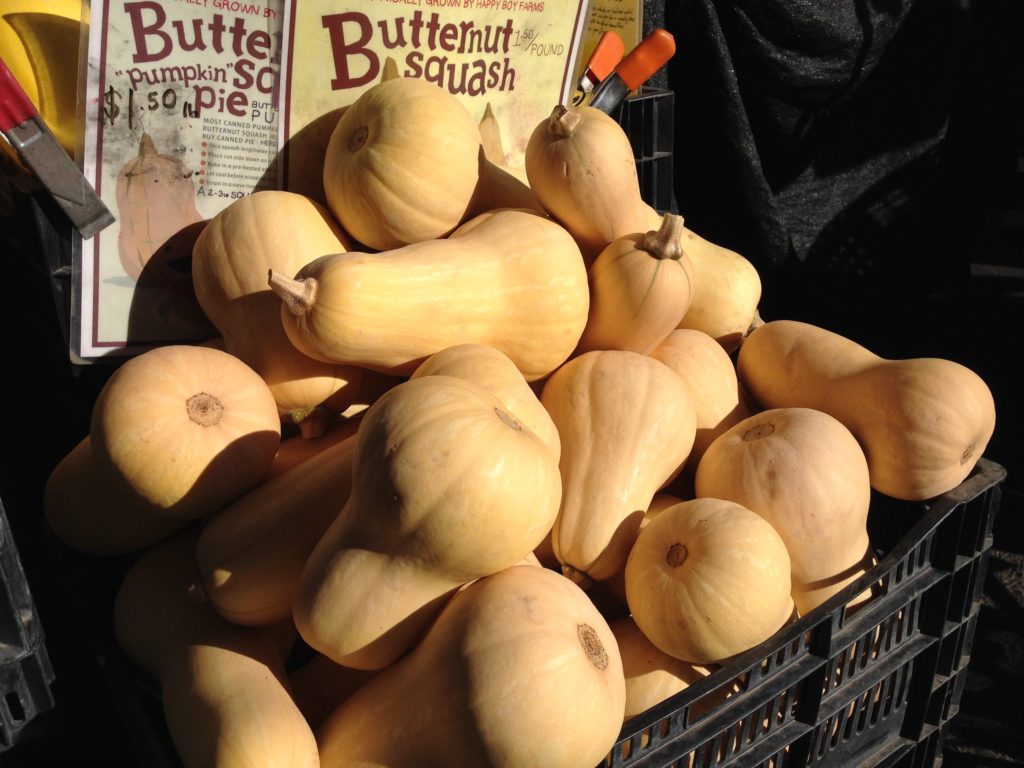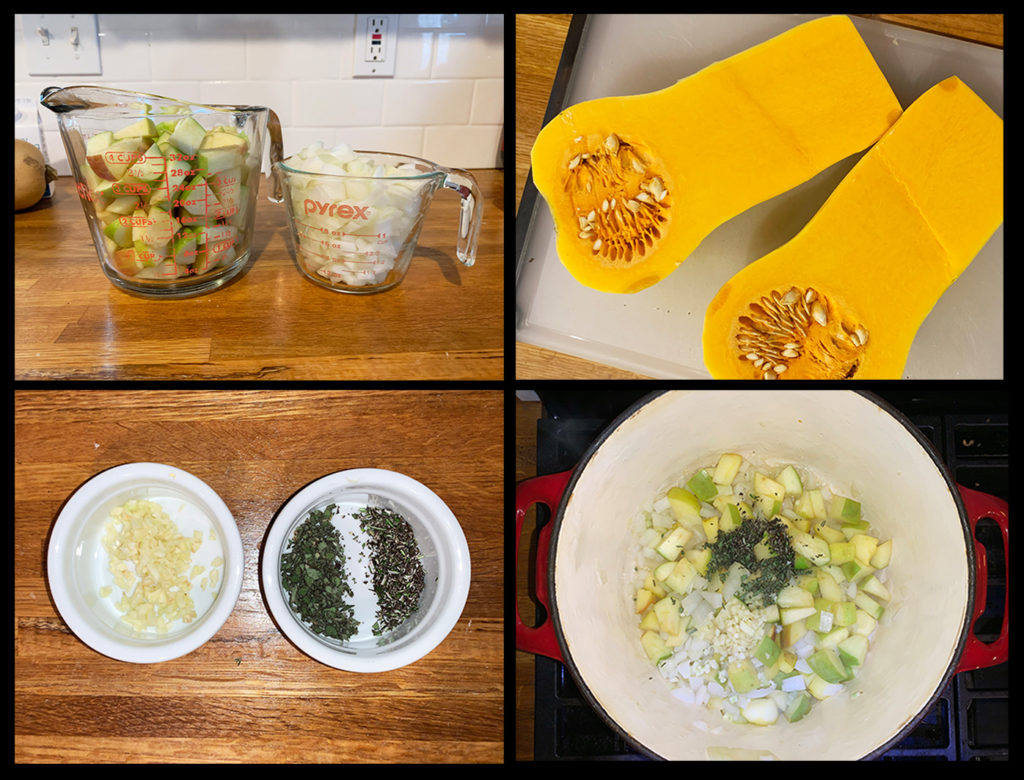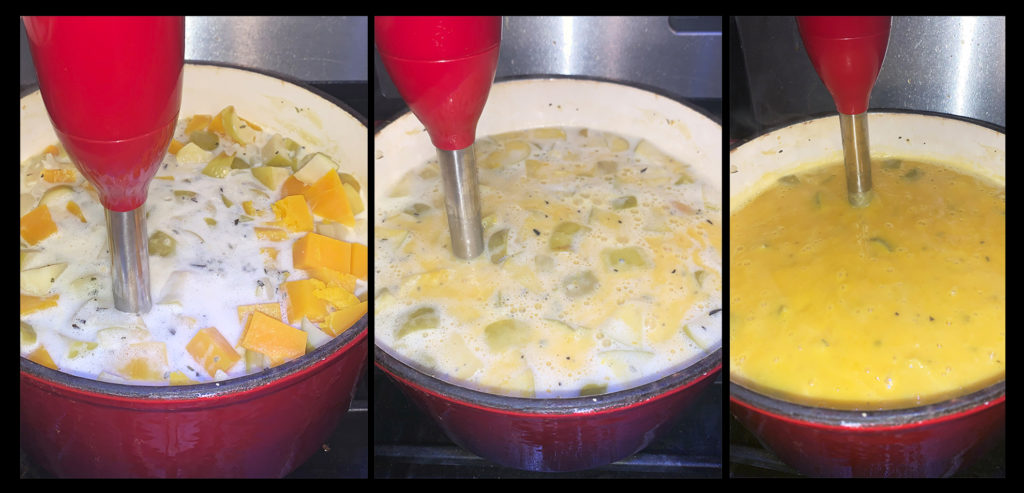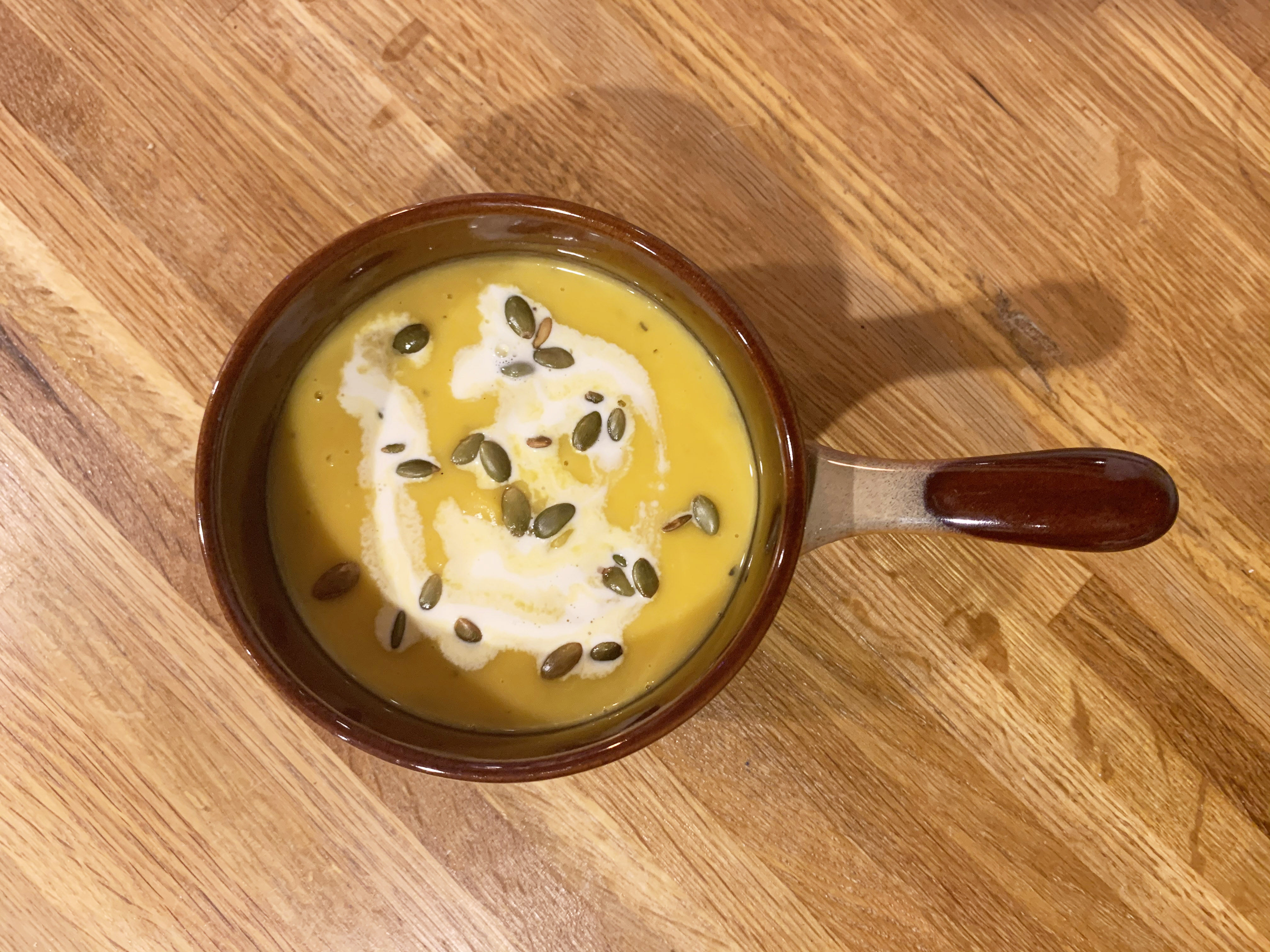Savory Winter Squash Recipe
go.ncsu.edu/readext?746675
en Español / em Português
El inglés es el idioma de control de esta página. En la medida en que haya algún conflicto entre la traducción al inglés y la traducción, el inglés prevalece.
Al hacer clic en el enlace de traducción se activa un servicio de traducción gratuito para convertir la página al español. Al igual que con cualquier traducción por Internet, la conversión no es sensible al contexto y puede que no traduzca el texto en su significado original. NC State Extension no garantiza la exactitud del texto traducido. Por favor, tenga en cuenta que algunas aplicaciones y/o servicios pueden no funcionar como se espera cuando se traducen.
Português
Inglês é o idioma de controle desta página. Na medida que haja algum conflito entre o texto original em Inglês e a tradução, o Inglês prevalece.
Ao clicar no link de tradução, um serviço gratuito de tradução será ativado para converter a página para o Português. Como em qualquer tradução pela internet, a conversão não é sensivel ao contexto e pode não ocorrer a tradução para o significado orginal. O serviço de Extensão da Carolina do Norte (NC State Extension) não garante a exatidão do texto traduzido. Por favor, observe que algumas funções ou serviços podem não funcionar como esperado após a tradução.
English
English is the controlling language of this page. To the extent there is any conflict between the English text and the translation, English controls.
Clicking on the translation link activates a free translation service to convert the page to Spanish. As with any Internet translation, the conversion is not context-sensitive and may not translate the text to its original meaning. NC State Extension does not guarantee the accuracy of the translated text. Please note that some applications and/or services may not function as expected when translated.
Collapse ▲Summer has come to an end, even if the temperature doesn’t quite agree yet! With your summer gardens finishing up, what other options do you have for fresh, diverse produce through the cooler months? A common item you may be seeing in grocery stores right now is winter squash, one of which is specifically called butternut squash. You may have seen this and wondered if it was a squash or gourd or some other crazy vegetable. It is actually considered a fruit! Even more confusing, it is planted in the summer months and harvested in the fall. With it’s thick skin and firm flesh, it is able to keep fresh for at least one month after harvest (often longer, into the winter months – hence, a winter squash), as long as it has not been peeled or cut.
What’s so good about butternut squash anyways? In just 1 cup of butternut squash, you will find approximately:
- 50% of your daily recommended Vitamin C
- 450% of your recommended Vitamin A
- 20-25% of your recommended Potassium and Fiber
- High levels of beta-carotene, Vitamin E, Vitamin B-6, and folate
- Low levels of calories and fat
And this all means what, exactly??
I’m so glad you’ve asked!
Butternut squash provides some amazing nutrients to our bodies to help keep us healthy and energized. All that Vitamin A, C, E, and beta-carotene? It does wonders for boosting your immunity, maintaining collagen structure for your skin and hair, improving wound healing and tissue repair, and improving eye and bone health.
Consuming the recommended amount of potassium can have a positive effect on your blood pressure. Did you know that 1 cup of butternut squash provides more potassium than 1 banana? Now you do!
Proper fiber intake helps with digestion, blood sugar regulation, decreasing your risk of obesity and diabetes, preventing constipation, and lowering blood pressure and cholesterol levels. It may even decrease your risk of cardiovascular disease, cancer, obesity, and inflammation.
Choosing the right squash and preparing it the first time can be a little intimidating. Check out these tips to help in the grocery store, farmer’s market, and your kitchen!
- Choose a squash that feels heavy for its size
- Ensure the rind is hard, smooth, and free of blemishes
- Microwave the entire squash for 2-4 minutes to soften it just a tad to make slicing it in half easier (this is a great tip for spaghetti squash as well)
- To freeze leftover soup, let cool then place in freezer quart ziploc bags. Place flat in freezer for space-saving storage! Take out the night or morning before your planned use and defrost in the fridge or under cool, running water before heating back up.
As the weather begins to cool and you start to think about comforting, tasty, and nutritious soup options, give this delicious and simple recipe a try!
 Butternut Squash and Apple Soup
Butternut Squash and Apple Soup
Makes 8-10 servings
Ingredients
- 2 tablespoons olive oil
- 2 cups small yellow onion, diced (1 onion)
- 3 cloves of garlic, minced
- 4 cups Granny Smith apples, diced (2-3 apples, depending on size)
- 2 teaspoons fresh rosemary, chopped
- 2 teaspoons fresh sage, chopped
- 8 cups butternut squash, peeled and diced (about 5 pounds/2 small squash)
- 10 ounces whipping cream (can substitute coconut milk for vegan option)
- 32 ounces unsalted chicken broth
- 2 teaspoons paprika
- salt and pepper to taste (this recipe specifically used 1 teaspoon salt; 2 teaspoons black pepper)
- Optional: Pepitas, sunflower seeds, or pumpkins seeds for topping
 Directions
Directions
- Microwave butternut squash 2-4 minutes each. Peel and slice in half. Scoop out seeds, then dice squash.
- Bring a large soup pot to medium heat and add olive oil. Add the onion and apple, sauteing until onion is translucent, about 3-5 minutes.
- Add in the garlic, rosemary, and sage. Saute for an additional 1-2 minutes.
- Add in the squash, whipping cream, and chicken broth.
- Raise the heat to high and bring mixture to a boil for 10-12 minutes.
- Reduce heat to medium-low and simmer uncovered for 8-12 minutes, until squash is fork tender.
- Use an immersion blender* to blend soup until smooth.
- Add paprika, salt, and pepper and adjust as needed to your taste.
- Transfer to soup bowls. Top with pepitas or desired seeds, a splash of cream, or black pepper, as desired. Enjoy!!
*You can also transfer mixture in batches to an upright blender and blend on high speed until smooth. Be sure the mixture is slightly cooled and done in batches, not all at once.
Nutrition Facts for 10 servings: 202 calories, 2.6g protein, 9g fat, 4.6g fiber, 6g fat, 294mg sodium, 20g carbohydrates
**To reduce carbs, fat, and cholesterol, swap whipping cream for a low-fat cream or milk option.






